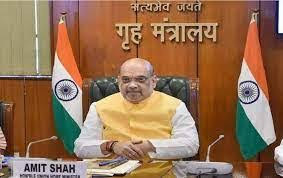By Dr. Gyan Pathak
Only a few weeks ago on September 17, Union Minister of Home Affairs Amit Shah had said that India will soon begin Census exercise. Now, TDP leader and Chief Minister of Andhra Pradesh Chandrababu Naidu has planned legislation to encourage people to ‘have more children for the benefit of the nation’ and the Chief Minister of Tamil Nadu and DMK leader M K Stalin has talked about aiming at 16 children, in a country that is already largest populated in the world. There have been other utterances in the past by communal forces who want their population to increase. All these indicate about an emerging complex political issue in the country in near future.
The Census exercise has direct connection with the political representation, since the delimitation of constituencies for the Lok Sabha and State Legislative Assemblies is to be carried out on the basis of the first Census after 2026. In normal course, the delimitation process for the number of seats, boundaries of territorial constituencies and determining the reserved seats for SC and ST would have happened based on the Census 2031 as it would have been the first Census after 2026.
However, Census 2021 could not happen due to COVID-19 crisis, and is likely to held now. Though, the government has not yet announced the Census schedule, it has been reported that Census results are likely to come out by March 2026. It has instilled a fear among all the southern states, as well as some smaller states like Punjab, Himachal Pradesh, and Uttarakhand that they stand to lose by delimitation and their representation would drastically come down in the Lok Sabha.
Those states likely to lose after delimitation say that they have successfully implemented the population control programme and now they are being at the receiving end, while those states, especially, Uttar Pradesh, Bihar and Madhya Pradesh, who continued begetting more children are now set to get maximum benefit in the resources and political representation.
Tamil Nadu Chief Minister was more specific. He cites the likelihood of decreasing the Lok Sabha seats from the state and said, “But today, as there is a scenario of decreasing Lok Sabha constituencies, it raises the question: why should we restrict ourselves to having fewer children? Why shouldn’t we aim for 16 children?” It should be noted that his DMK is INDIA bloc ally.
The NDA ally Chief Minister Chandrababu Naidu has, however, not said anything this time regarding the delimitation and the likely loss in number for seats in the Lok Sabha, though he has been talking about it earlier when he was not part of NDA. He now talks about another issue of ageing population. “We are thinking of providing incentives to families with more children, encouraging couples to have more children,” he said.
Referring to the state cabinets decision of August 7, Nadu said, “We have repealed the earlier law barring people with more than two children from contesting local body elections,” adding “We will bring in a new law to make only those with more than two children eligible to contest.’’
Naidu has said the population growth in the state has declined and came down to 1.6 per cent while average population growth in India is 2.1 per cent. “We are already in deficit. Having less than two children leads to the rapid decline of the young population. Having more than two children will ensure a stable population,” he has said.
During a public even he said, “We have a demographic advantage only till 2047. After 2047, there will be more elderly people than young in Andhra Pradesh,” adding “Having more children is also your responsibility. You are not doing it for yourself, it is also for the benefit of the nation, it is a service to society.”
This indicates another dimension of the complex situation of sharing national resources equitably apart from the political representation. More population a state has more central resources will be garnered by them, and more political power would follow them in terms of representation in the Parliament of India. More political representation would insure power of the north over the south, the southern states fear.
Since the present 543 Lok Sabha Constituencies are based on 1971 Census these are set to rise to 848 seats according to the projected population of 142 crore. In that case the number of seats in Uttar Pradesh would increase from 80 to 143, Bihar from 40 to 79, Rajasthan from 25 to 50 and Madhya Pradesh from 29 to 52.
On the other hand, in the southern states – in Tamil Nadu it would increase from 39 to 49, Andhra and Telangana from 42 to 45, Karnataka from 28 to 41. As for Kerala is concerned its seat will remain at 20, since it is the state which implemented the population control programme do the country in best possible way. Obviously, the southern states will be at receiving end.
Not only the southern states, but also smaller states in the north will also be at receiving end, such as in Punjab the Lok Sabha seats will increase from 13 to 18, in Uttarakhand from 5 to 7, and in Himachal its 4 seats remain at 4


